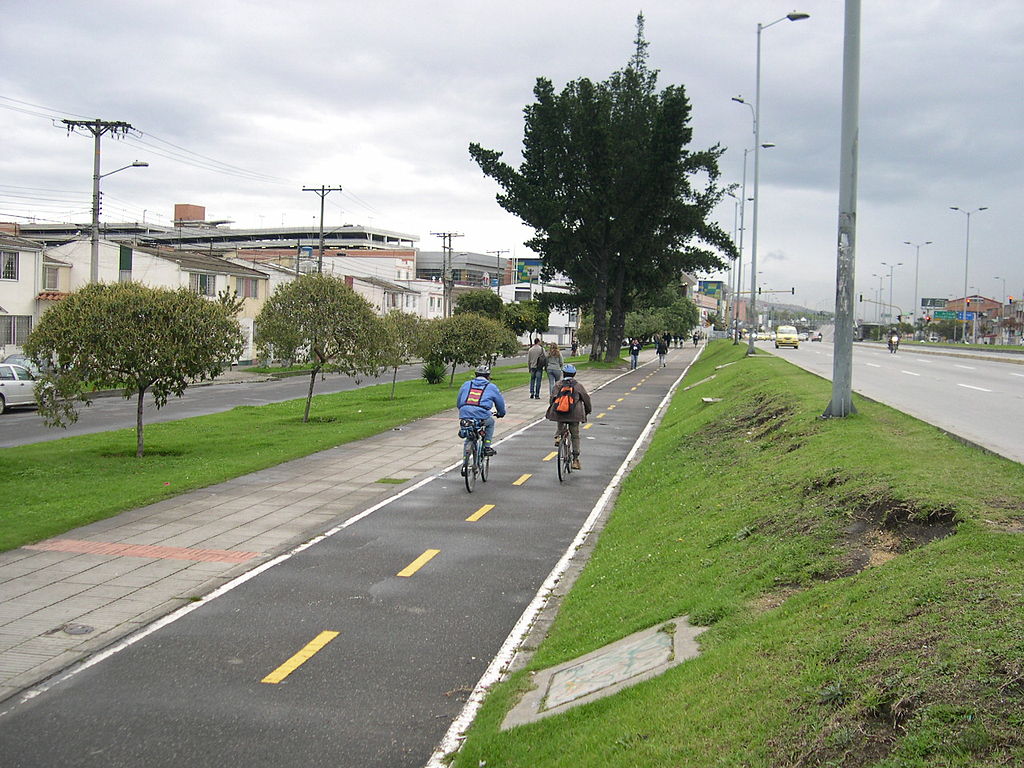How can government investments in infrastructure projects help trigger good sustainable change? How can we overcome our lock-in to fossil-fuel intensive transport systems?
Bogotá is the largest city of Colombia with a population of 7 million. Since the 1990s it has undergone a transformation from being know for its drug violence to its sustainability initiatives, many which have focussed on public transportation as a key for social inclusion. One of these initiatives was large investment in bicycle infrastructure, its CicloRuta is an extensive network of over 440 km bike paths.

CicloRuta bike paths are often protected bicycle lanes, seperated for car traffic, that are located next to pedestrian walkways, and designed to fit with the topography of the city to provide flow and function. The network was designed and built during the administration of multiple mayors. It was started by Mayor Antanas Mockus, greatly expanded by Enrique Peñalosa and subsequent mayors made smaller additions. This network was developed at the same time as Bogota developed TransMilenio – its famous bus rapid transit system (BRT), and the the bike path network was designed to connect residents and commuters to this system.

Cicloruta on Av Esperanza, Bogotá in 2015. Photo Pipepupo.
CicloRuta prioritises biking over driving and eases the use of bicycles. A key goal of CicloRuta was to provide safe transportation options for the majority of residents in Bogota who cannot afford a car. CicloRuta’s provided space for people on bikes and on foot to move as well as cars.
By investing in bicycle paths Bogota has aimed to increase social equity, by increasing the mobility of its people. With bike paths showing that someone on a bike is as important as some one on a car, and the bicycle network connects the city’s poorest neighborhoods with the rest of the city. Recent estimates show that about 1/4 of trips by by the lowest income group in Bogota are by foot or on bike.
Bogota’s bicycle path network has been regarded as a model for other cities, because it more than greatly increased bicycle use in the city (estimated 0.2% of trips in 2000 to 4% of trips in 2007) as well as reduced air pollution and promoting physical activity for health. CicloRuta and other sustainability initiatives have been frequently studied, and research has shown the system has real economic, social, and health benefits as well as identifying room for improvement.
[vimeo 27307346 w=640 h=360]
Riding Bogota’s Bountiful Protected Bikeways from STREETFILMS on Vimeo.
From its initial beginnings, CicloRuta has spread in Bogota, been copied by many other cities within and outside Colombia, and has helped promoting changes in how the city’s residents use public space and connect with nature.
Updated from previous version by Laura Pereira Oct 26, 2016.



